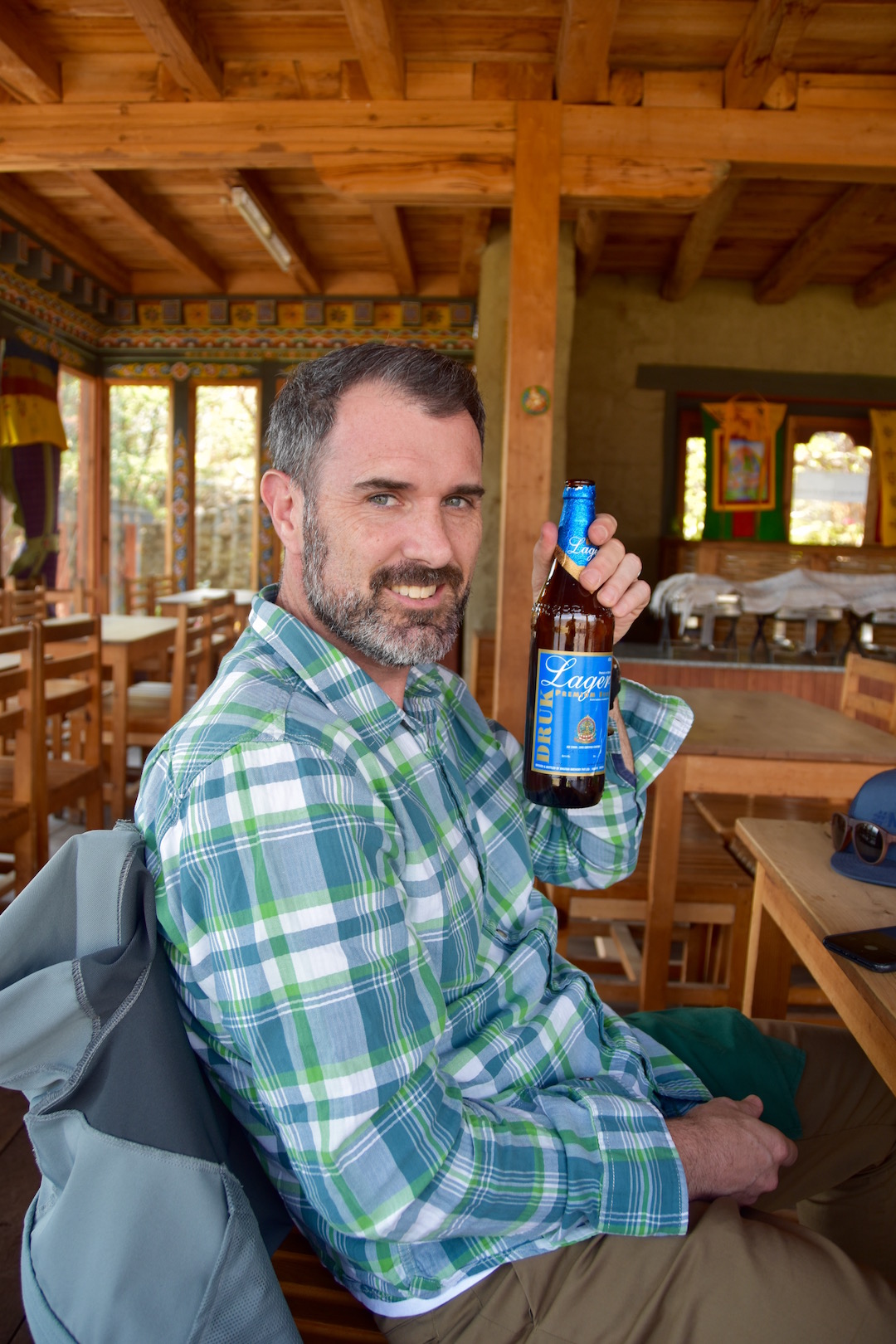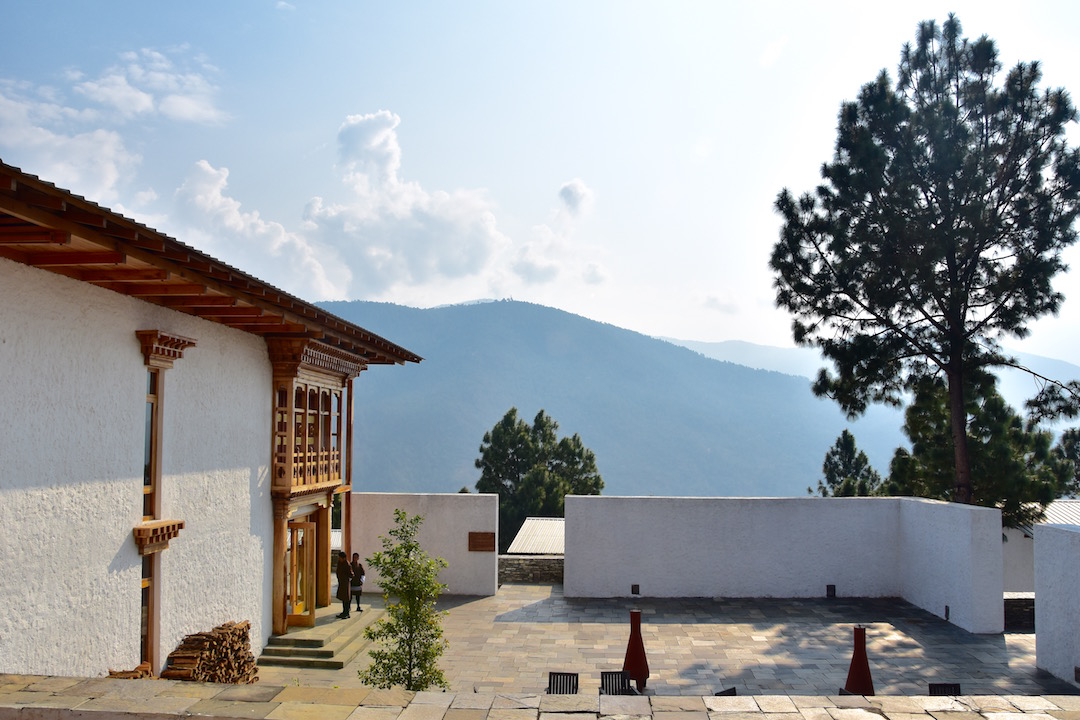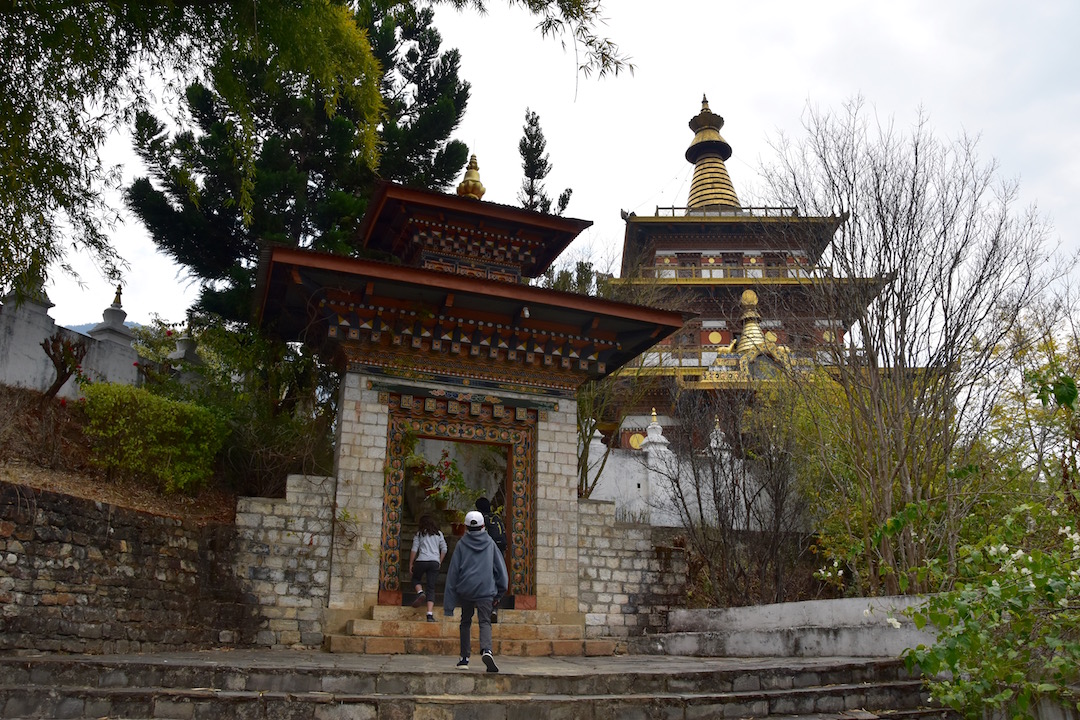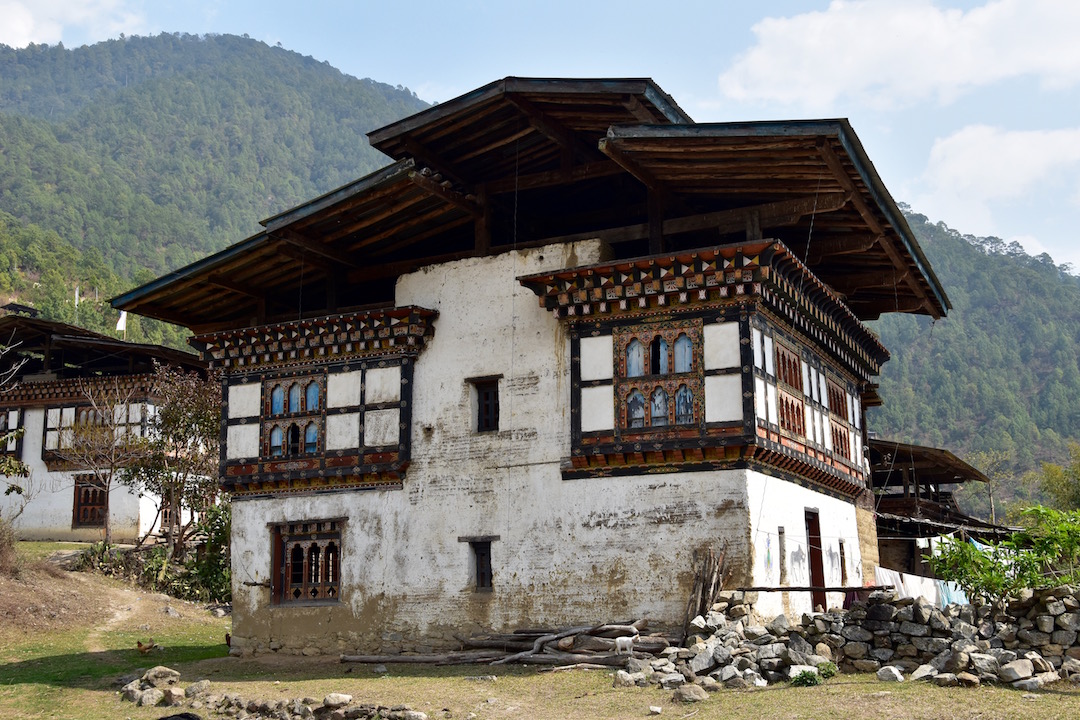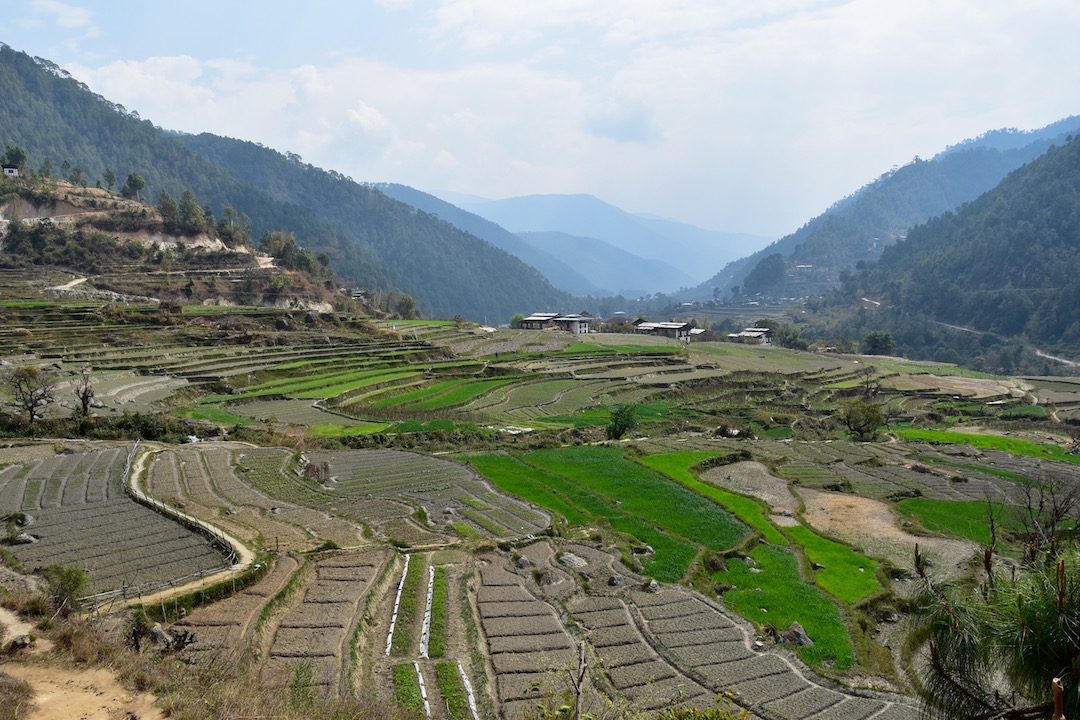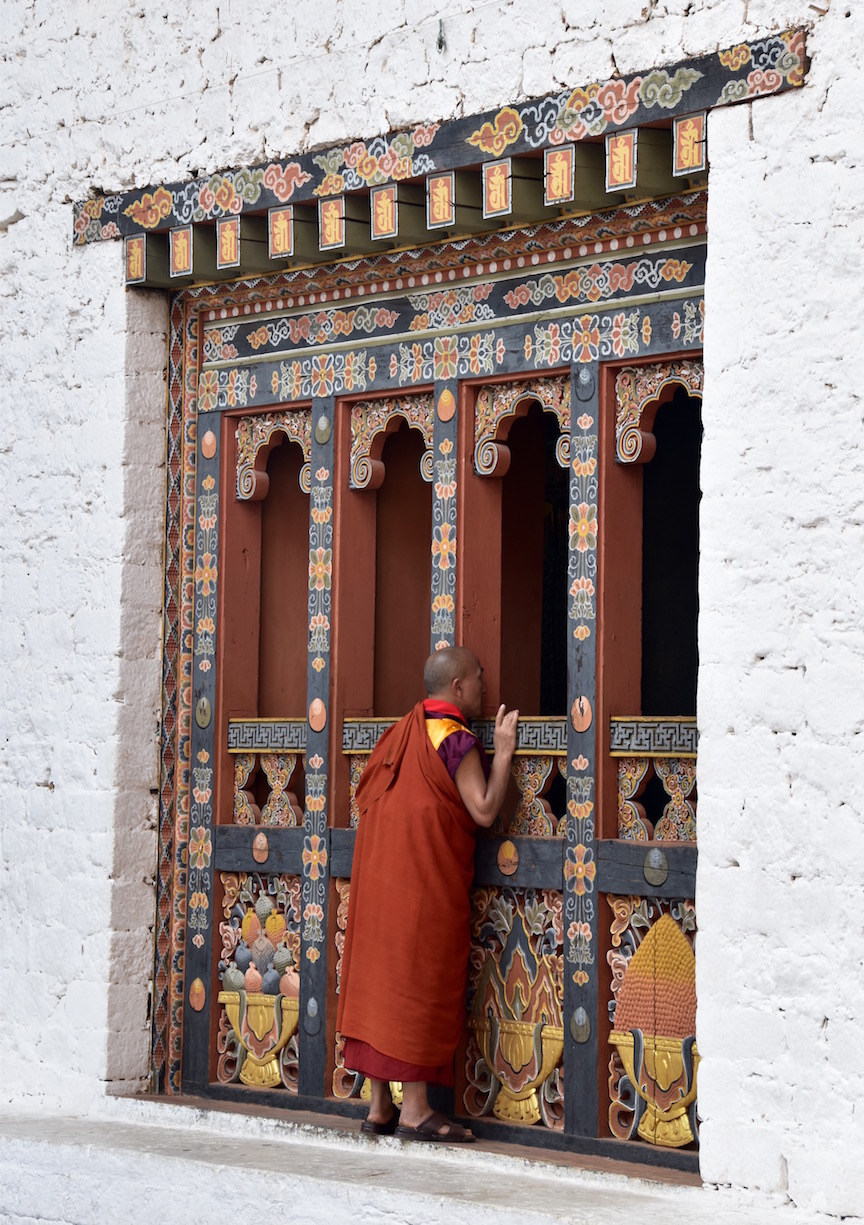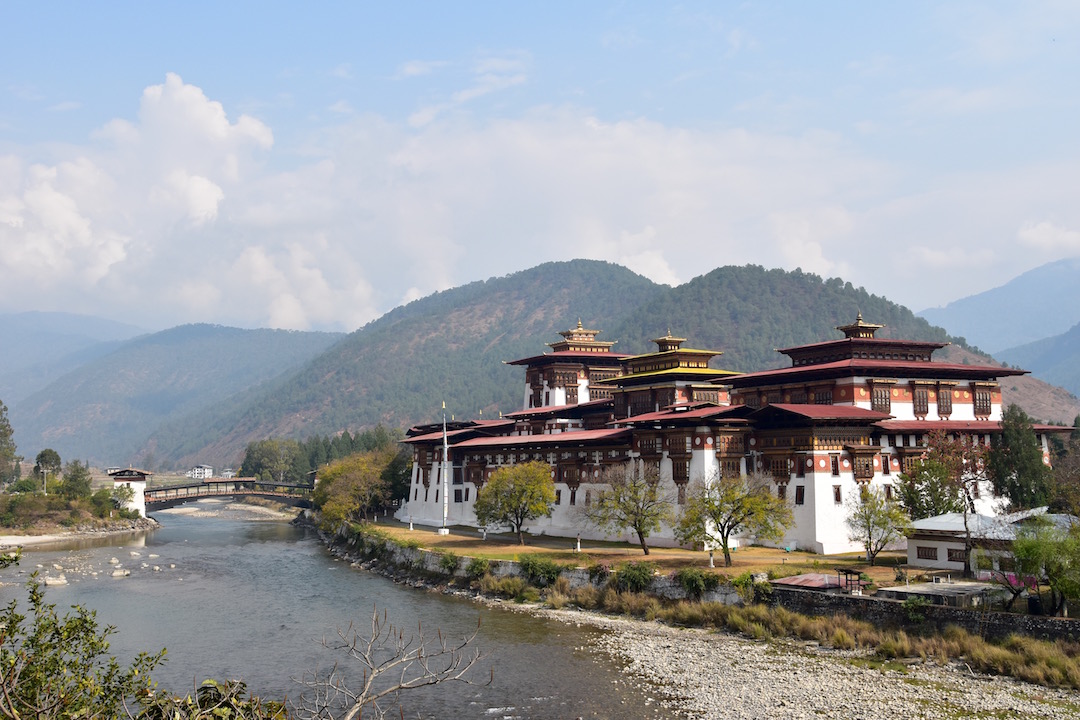Let me see that Dzong.
The drive from Thimphu to Punakha with our guide Dorji and driver Karma reminded me of the landscape of northwestern New Mexico with pine trees and a dryness to the soil among the mountains. But the more we drove, the more I saw the diversity in the landscape and began to see some color in the early spring: Red flower Rhotodendron, purple primrose, white magnolia, cherry blossom and oaks among the pine and the national tree of Bhutan which is the cypress.
We stopped for tea at Dochula Pass at 10,200 feet elevation in the Himalayas, where on clear day you have a view of the highest peaks in Bhutan including Mt. Masanggang at 23,484 ft. This mountain pass is home to the 108 Druk Wangyal Chortens, which celebrates the Bhutanese military victory over Indianian insurgents in 2003 and memorializes the lost soldiers. This is also near the location where Drukpa Kunley (more on him later) is said to have subdued the 3 demonesses in the 15th century.
After lunch we headed down into the Punakha Valley. I loved the way the rice paddies were carved into the mountainside. Even though it’s not yet rice season, since the Punakha area has such a good climate and fertile soil, you could already see crops of chillies, beans, spinach, mustard, wheat and coriander where the rice will soon grow.
Next stop was the Chimi Lhakhang temple and surrounding village - very interesting artwork on walls and doorways on the homes outside this temple. Drukpa Kunley was not your “average” saint if you know what I mean. See NSFW post.
The last stop on our first day in Punakha was a Buddhist Nunnery called Dorji Lhuendrup. All the girls had shaved heads and wore deep red robes, which made them look just like the male monks we’d seen in the other monasteries. The shaving of the heads is a tradition that goes back to the first Buddha when he leaves his wealthy family to see the "real" world, sheds his belongings and cuts his hair.
We turned in at the Dhensa Hotel which is amazing. We were invited to a pre-dinner happy hour to watch the hotel staff do 30 minutes of traditional Bhutanese dances. The one other Hotel guest, a Swiss couple from Bangkok, were very nice.
The next morning we took a short drive into the valley to begin a 45 minute hike to the Khamsum Yuelley Namgyal chorten. Along the way we passed a prayer wheel where an 88 year old man was spinning the wheels and counting his prayer beads. We offered him water and some fresh apples as appreciation. Not sure he had any teeth so maybe an apple wasn’t the best choice. He asked to borrow our guide’s binoculars so he could check out his neighbors house across the valley. His niece lived there and was building a new roof. We continued on to the chorten on top of the hill. It was a relatively new structure, built in 1999. We learned more about the 7 bowls and offerings that are present in all temples. This particular temple was the only one we’ve been able to take the stairs to the 3rd floor and also walk outside to see a stunning view of the valley.
We started the next leg of our hike through the fields and rice patties along a small farming community. We meet a farmer who our guide Dorji recently helped raise money to repair his house and update the traditional paintings that are on every Bhutanese structure.
We had a nice picnic by the river and watched the red ducks in the water. Then we took a short hike to a 220 meter suspension bridge. Carla made it halfway, despite her fear of heights, before turning back. The kids, on the other hand, decide to race each other across. Quentin tells Carla, "You don't have a fear of heights; you have a fear of falling."
Our last stop was the Punakha Dzong. A Dzong is basically a fortress. It's where the king and chief abbot would rule and conduct the country's business as well as the main area for protection. Punakha was the capitol of Bhutan prior to the 1950's when it was moved to Thimphu. Legend says that when Ngawang Namgyal found a mountain shaped like a sleeping elephant, he'd know where to build the Dzong. We were told another story of a time when a small Tibetan force was planning on attacking the Dzong. The general of the Bhutanese army told the villagers to each plant an Aramenthis flower, which happens to be the same color as the Bhutanese army uniforms. When the small unit from Tibet came to the ridge of the mountains leading to the Dzong, the saw what appeared to be thousands of Bhutanese troops in color and decided to retreat being outnumbered.
